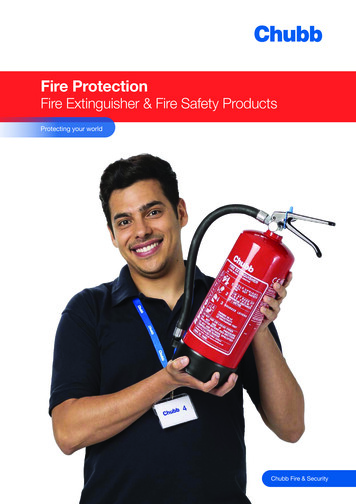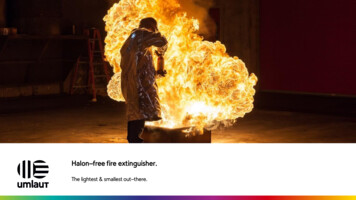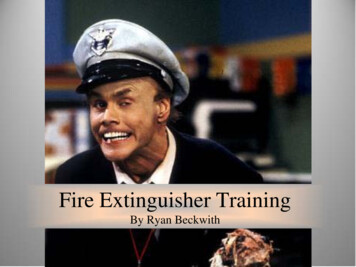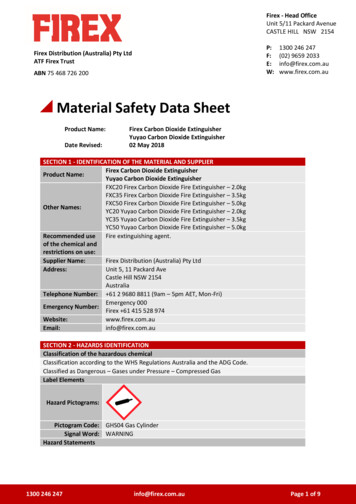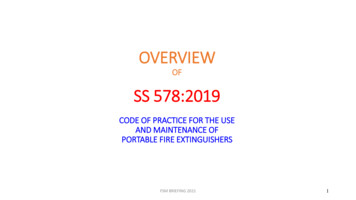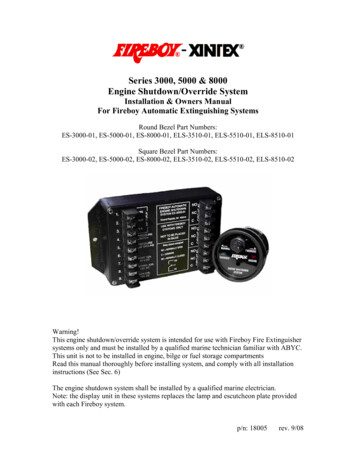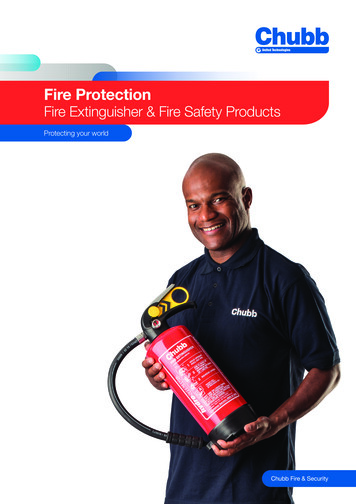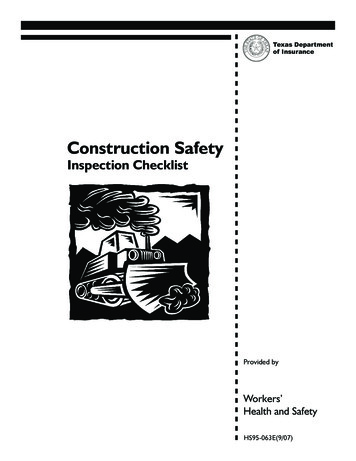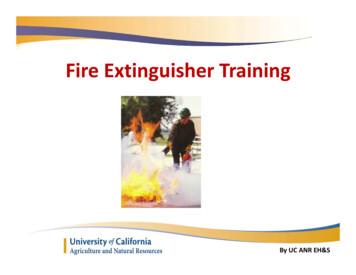
Transcription
Fire Extinguisher TrainingBy UC ANR EH&S
Introduction What should you do if there is a fireWhat types of fires are thereWhat types of extinguishers are availableHow to use a Fire ExtinguisherHow to inspect a Fire Extinguisher
What should I do if there is a fire? Some things you need to think about – Are you in imminent danger?Do you have a safe way to exit the area?How big is the fire?What type of fire is it?Remember – Using a fire extinguisher by ANRemployees is completely voluntaryRunFightHide
If you are: In imminent danger – Evacuate to a safe area DO NOT have a safe way to exit – Find a way to exit thearea or make an exit and evacuate to a safe areaRemember: No Fire is worth risking your life.
How big is the Fire?Small Trash or Incipient FireDesk or Room FireBuilding Fire
What type of Fire is it?ABC rated fires are themost typical in an officesetting
Elements of a Fire Fuel – Can be from vapor, liquid, or a solid source Oxygen – In the air around the fire Heat – As small as a spark or a large heat source Need all three to have a fire, remove one and the fire willdieFUEL
Types of ExtinguishersFire Extinguisher ChartExtinguisherTypeType of FireABCKSpecialNotesDangerous if used on‘liquid fires’ or liveelectricityWaterNot practical for homeuseFoamSafe use up to 1000VDry PowderSafe on high and lowvoltagesCarbon Dioxide(CO2)YesNo
What Type do We Have? In most office setting the extinguisher is aDry Chemical rated for A, B, & C fires. Location should be designated with a sign and on youremergency route map. Instructions on how to use the extinguisherare found on the extinguisher itself andsometime on a separate pamphlet.
Fire Extinguisher Anatomy
Is there a danger in using a Fire Extinguisher? In most cases fire extinguishers do not pose a directhazard to the operator. Dry Chemical – Have a non‐toxic powder that may be likea nuisance dust if inhaled Carbon Dioxide ‐ The CO2 will be cold coming out andwill displace the oxygen in the room. If problems dueoccur, remove yourself and others from the area. Consult your SDS for specific health and protectivemeasures for your extinguisherSDS – Safety Data Sheet
What are the limits of a Fire Extinguisher?Have an Effective range of 6 to 10 feetHave a duration of 10 to 20 seconds dependent on sizeOnly work on small, semi‐contained firesOnly work if you know where they are and how to usethem Home use extinguishers (non‐rechargeable) have a shelflife of 8‐10 years Note: Never throw a fire extinguisher at a fire!!!
How to use a Extinguisher P ‐ PullA ‐ AimS – SqueezeS ‐ Sweep
Before you attempt to extinguish a fire: Make sure everyone has left, or is leaving, the building. Make sure the fire department has been called/alarmsounded. Make sure the fire is confined to a small area and is notspreading. Be sure you have an unobstructed escape route to whichthe fire will not spread. Be sure you know what’s likely burning and yourextinguisher is right for the fire.It is reckless to fight a fire in any other circumstances. Instead,leave immediately and close off the area.
For more information refer to the: ANR Fire Control and Suppression Policy and Procedure Safety Note #50 & 72
Fire Extinguisher TrainingIf you need more information please visithttp://safety.ucanr.eduThank You
Is there a danger in using a Fire Extinguisher? In most cases fire extinguishers do not pose a direct hazard to the operator. Dry Chemical -Have a non‐toxic powder that may be like a nuisance dust if inhaled Carbon Dioxide ‐The CO2 will be cold coming out and will displace the oxygen in the room.
